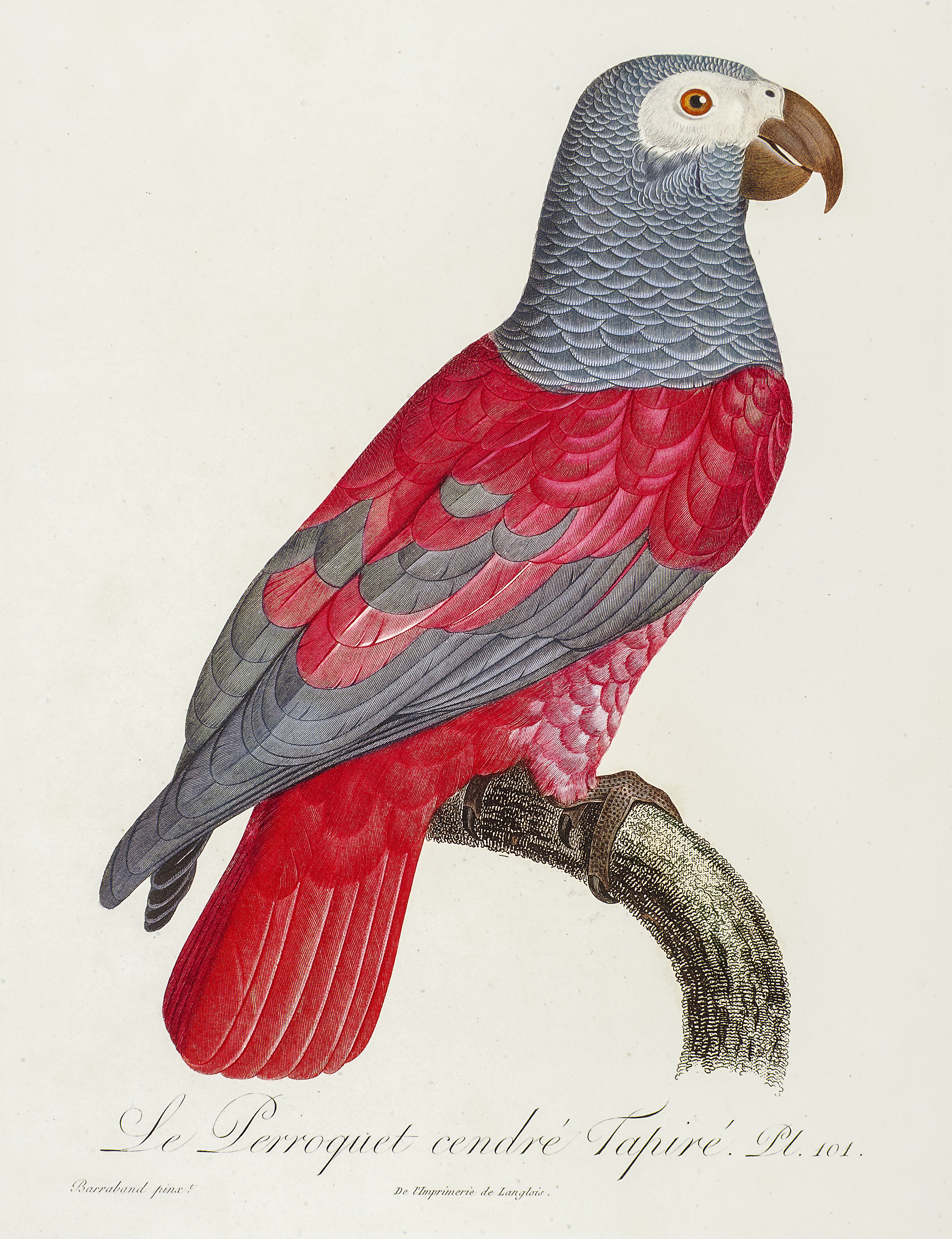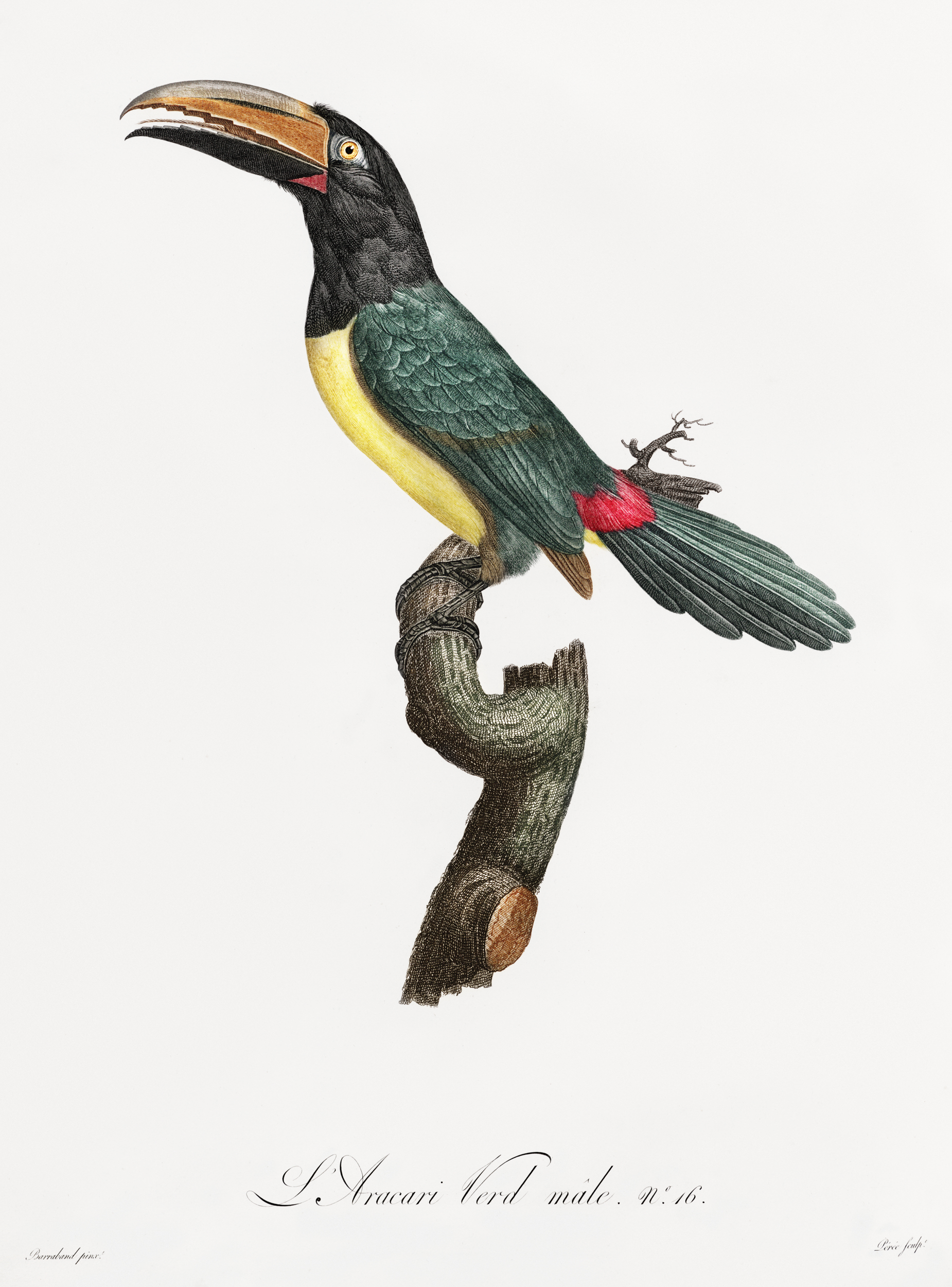Is it possible for a grey parrot to contradict its name and be so very red? Is this bright coloration the sheer fantasy of the author, who was in fact accused of fabricating at least 20 non-existent bird species?
In the first years of the 19th century, François Levaillant (1753–1824), a famous ornithologist active in Emperor Napoleon's circle, worked with illustrator Jacques Barraband (1767?–1809) to create monumental atlases of natural history considered among the finest in terms of artistic value. Into existence came hundreds of watercolors, which were then copied with the labor-intensive and rare technique of color engraving. First, colored inks were applied to a single copper plate. Next, the image was printed onto paper. The obtained subtle tones were given a final retouch with watercolor or gouache paints. The hyperrealism and lavishness of these scientific sheets hint at their other purpose. They were intended for rich subscribers or funded by powerful patrons to demonstrate wealth and vast geopolitical influence.
Having spent his youth in Dutch Guiana (Surinam) and traveled extensively across Africa, Levaillant had closely observed the behavior of exotic birds, drawn up their detailed descriptions, and collected exhibits. Although he occasionally combined features of different species in one image, some African Grey Parrots really do have this many red feathers!
Nowadays, specimens like the one shown here are called Red Factor parrots. Their coloration is caused by a naturally occurring genetic mutation that breeders have long sought to strengthen. Take a closer look at the image. Note that the engravers used red—not black—ink to outline the colorful plumage. Dark contours would have marred the striking effect of bright red.
This and other graphics from atlases of natural history can be admired at the Plants and Animals exhibition at the Museum of King Jan III's Palace at Wilanów, in Warsaw, Poland. : )
P.S. Check out here the stunning botanical art of Barbara Regina Dietzsch.


 Louis Bouquet after Jacques Barraband
Louis Bouquet after Jacques Barraband